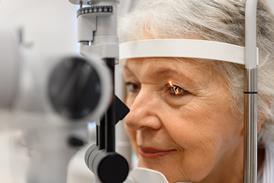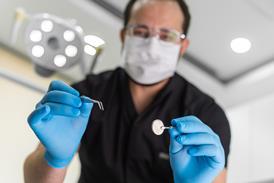It was inevitable that a government regarding the empowerment of individuals and communities as its raison d’être would seek to instil a greater public voice into the health service.
The weary members of the public who had already been attempting to instil a greater patient and service user voice in the NHS probably felt it was equally inevitable that the government would seek to destroy the existing local systems through which they operate and impose a baffling new arrangement. They are used to this happening.
Volunteers who have had to cope with the demise of community health councils, the rise and fall of patient and public involvement forums and the birth of local involvement networks now face seeing their bodies “evolve” into HealthWatch.
Repeatedly under Labour, and now under the coalition, ministers have sought to solve the problem of a lack of patient voice in the NHS by removing the one that already existed. The lifespan of organisations has been such that they had rarely found their voice before they disappeared. There was little opportunity for each system’s strengths to be built upon and its flaws ironed out before a new system was imposed.
Few civic minded volunteers could have withstood this baffling sequence of reorganisations. Why bother to win the trust of local volunteers, build up relationships and begin to understand an array of organisations if the rug is going to be pulled from under you? Committed people will have left their role disillusioned, only to be replaced by new volunteers whose enthusiasm swiftly waned.
Andrew Lansley follows the likes of Alan Milburn and Patricia Hewitt in thinking his system will be the best. “For the first time in 40 years, there will be real local democratic accountability and legitimacy in the NHS,” the consultation document into the changes proclaims. Local HealthWatch branches, we are told, will be more independent than LINks by being corporate bodies in their own right and employing their own dedicated staff.
However, HSJ this week reveals growing concern over Mr Lansley’s plans.
There will be no additional money to set up the local bodies. Funding will not be ringfenced and will be routed through councils which might consider HealthWatch to be a low spending priority. Embarrassingly, the Department of Health had to withdraw a consultation document after it appeared to suggest HealthWatch branches could be run for as little as £20,000 a year, compared with the £100,000 spent by LINks.
HealthWatch – which can recommend that the Care Quality Commission investigates services and must be consulted by councils over their health plans – faces doing more than LINks with fewer resources.
Although we are told the transition will be evolutionary, it seems start-up costs can only be paid by removing funds from LINks. In effect the new organisation will feed from the carcass of the old.
Meanwhile, confusion surrounds a Health Bill amendment which demands HealthWatch is “representative” of the local community. Volunteers are usually representative of those members of the community with time on their hands – the retired for instance. Many groups could fall foul of this rule.
The government still has time to show these are mere teething problems and not fundamental flaws. It must show HealthWatch has the teeth to hold local organisations to account and cough up the transition costs. It is not too late to prove an incremental path can be taken to retain local expertise in successful LINks but force change in areas where LINks have performed poorly.
If the government fails to do this the next health secretary will inevitably come along and jettison Mr Lansley’s solution, causing more disillusionment among volunteers and continuing the pattern of local hard work being undermined by reorganisations enforced by the centre.

























4 Readers' comments